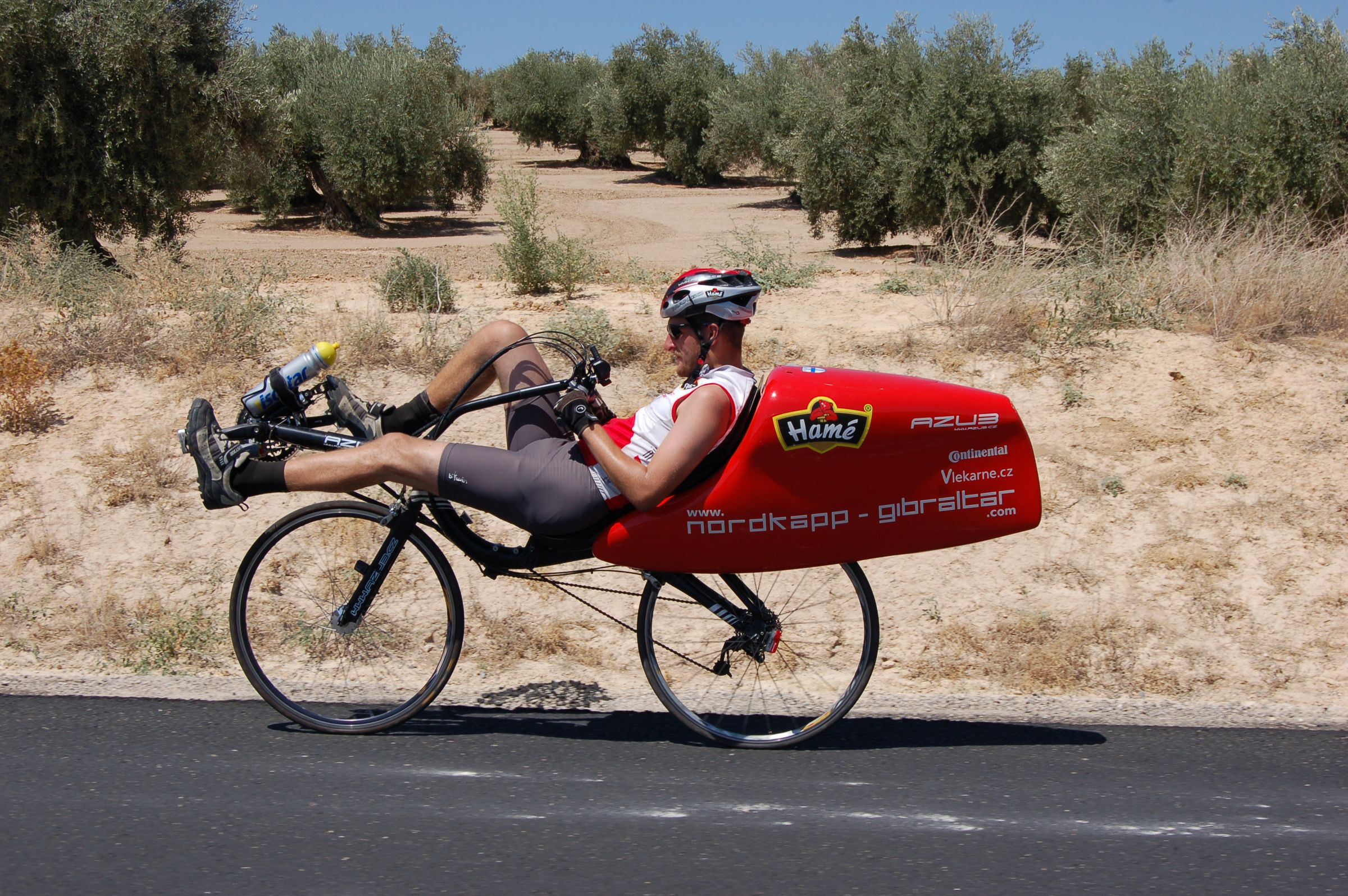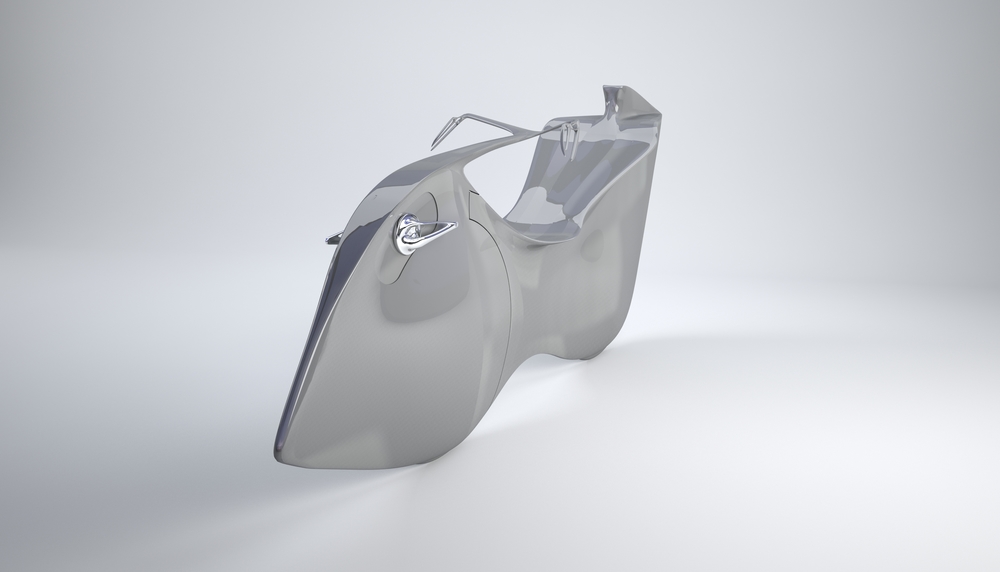Recumbent bikes and trikes, not talking about quads or velomobiles, are still relatively unusual on the roads, but one can’t really say they are entirely unknown. Recumbents are appearing more often on bike paths in countries like Germany, the US, Canada, Sweden, or France, and it’s no wonder. Their owners love them, and they especially praise their immense comfort. Here is an overview of the eleven things you should know about them in case you find them interesting.
Photo credit: Katanga.eu / Azub.eu
1. Two-wheelers and trikes
First, I must mention that the so-called recumbents include a few basic types. From the single-track ones that have two wheels, through the increasingly popular trikes, to the version with four wheels. And I can’t forget the fully-faired variant, which is called velomobile. Tricycles have become the world’s most popular in the last ten years. Thanks to their large, ergonomically shaped, and richly padded seats, trikes are the most comfortable bicycles you can find worldwide. And, you don’t need to learn to ride them like the two-wheelers. You just sit down and ride. Fully-faired velomobiles offer extremely low aerodynamic drag, making them very fast. At 30 km/h (19mph), they need about half the power of a conventional road bike. In addition, the velomobile offers protection against adverse weather, even in winter. Read my article here to learn more about the difference between a trike and a two-wheeler.
2. Absolute comfort
I have already mentioned this in the previous paragraph. Recumbents are incredibly comfortable, and the reason is the ergonomic padded, really large seat. But not only that. On a recumbent, you sit like at home watching TV. You do not tilt back your head and break your neck. You do not lean on the handlebars, and your wrist does not suffer while riding. Your back is supported. And the ass? Butt? Ah, that’s just great. You simply don’t know about it. And when you stop at a beer pub, and the garden is full, you don’t care. The seat of your bike is by far the most comfortable chair around. And finally, perhaps I can mention another non-traditional cycling accessory that will add to the comfort. It is a headrest.
3. Medical harmlessness
Cycling is definitely a healthy sport, which is often recommended by doctors themselves. Still, especially if you ride your bike only occasionally, you may experience unpleasant pain or other limitations. I think I don’t need to mention the background, it is clear to everyone. Your wrists can be painful, and you can feel pain behind the neck or even numbness of the fingers. I would rather keep quiet about the insensitivity of male organs. Most similar problems can be solved by adjusting the upright bike, changing particular components, or just riding the bike more often. However, none of the above-mentioned pains appear on recumbent bikes, which fundamentally contributes to their comfort.
4. Even better workout
You may wonder, whether you get the same workout on a recumbent bike as on an upright classic bike. Well, you get even better workout, because recumbents are so fun and comfortable you will want to spend more time riding them compare to upright bikes, so at the end you get more (better) workout.
To answer this question correctly, recumbent bikes require use of different muscles than you normally use on your standard bike, but you still have to pedal so you get at least the same workout.


5. Faster or slower?
One of the most frequently mentioned advantages of recumbents is their speed. Yes, especially road recumbent bicycles that can be equipped with large aerodynamic units called windshields or tailboxes are significantly faster than conventional bicycles. This is especially true while downhilling or on plains, where low air resistance will provide a significant advantage. However, most recumbent riders prefer trips where they admire the beauty of nature and possibly spend time with their friends. They are not interested in speed as such. Therefore, their bikes are more of a tourist character and are equipped with many accessories that are miles away from any aerodynamic fairing.
6. Recumbents have their limitations
Each coin has two sides. This is probably true of everything in the world, including recumbent bikes. For them, the much-mentioned comfort is balanced by higher weight and thus slower hill climbs. Not that you wouldn’t be able to climb a little slope or that it would take you weeks to scramble to any longer hill, but you just need to be patient, pedal, and go. Most users don’t care. Comfort and pain-free cycling are worth it. Moreover, this disadvantage has been virtually eliminated with the advent of electric drives.
Recumbent bicycles are also a tiny branch of the cycling industry, and about 50,000 of them are produced annually worldwide. In any case, their price is higher than the price of a regular bicycle. You won’t find downright cheap pieces on the market, and in the middle-quality class, we talk about a double price. The price difference is not so significant for e-bikes or other top-equipped models.
7. By far the most visible
Although recumbents are often talked about in connection with their low height and thus poor visibility, the opposite is true. Most two-wheelers nowadays are relatively high bikes whose riders can easily see through the car screens and have contact with drivers’ eyes. Trikes are a bit worse, but in most cases, they are equipped with one or two flags, powerful lights that often shine during the day, and the cyclist usually uses a mirror to have an excellent overview of what is happening around him. So if the tricycle is adequately equipped, it is a very visible, if not the most visible, cyclist around. And the exceptions that, of course, exist could be placed alongside ordinary cyclists dressed in black jerseys or evening latecomers without lights.


8. Recumbents are not for everyone
Even if some stubborn recumbent fans will tell you that these bikes are the best in the world and for everything, don’t believe them. There are definitely disciplines that you can’t do with recumbents. For example, downhill or trial, or cycle-ball. The following are cycling disciplines that can be done with recumbents. However, buying a special bike for such a purpose is still better if you want to do it seriously. These would include mountain biking or daily commuting around the city. And then there are the activities for which recumbent bikes and trikes are made. Whether it’s any leisurely rides, a multi-day trip, or an expedition around the world.
9. History and UCI
Recumbents began to appear on the roads as early as the end of the 19th century. However, the 1930s were crucial for them. It all started by Frenchman Charles Mochet. His fast recumbents soon reached the racing velodromes, and Francis Faure started winning races thanks to better aerodynamics, even though he had not achieved any significant results before. The highlight was the world one-hour record, which Faure reached on July 7, 1933, with a value of 45,055 km / 28.159 miles. However, the International Cycling Federation (UCI) did not recognize it. In addition, they adjusted the technical regulations for the appearance of the racing bike so that no recumbent could ever race again. This way, they practically buried the development of these bikes for decades. In the 1980s, recumbents have begun to appear in the USA and the Netherlands again. From there, the news about their comfort and speed spread further into the world.
10. The fastest bikes in the world
Although still banned by UCI, recumbents have their own national and world championships. The highlight is the fall event at Battle Mountain in Nevada, USA. The event is all about reaching the highest possible speed man has ever developed without the use of any support. By support, I mean, for example, a car creating a windsock, or the slope of a hill, respectively the gravity. In Battle Mountain, the race is on a flat road, without cars. Athletes use only the advantage created by the top aerodynamics of fully-faired recumbent bikes called streamliners. And, hold on, Todd Reichert’s speed in 2016 was 144,17 km/h (90.106 mph), making him the fastest man on the planet.
11. Electric version
Of course, the growth of e-bikes has also affected the recumbent bike industry. The electric motor has eliminated the most significant disadvantage of recumbents in the form of higher weight and offered its users absolute comfort. Unlike standard e-bikes that improve only your muscular comfort, recumbents provide you with comfort, so to speak, positional. Or, if you want, a full-body comfort. And that’s just great. Read more articles about electric recumbents.
12. Manufacturers from around the world
Although the world of recumbent bikes is relatively small, there are manufacturers all around the world. Not only in the US or Germany, but also in the Netherlands, Australia, Czechia, or Brazil. And, of course, also in Taiwan. See the Recumbent Catalog for all the diversity, speed, and comfort recumbent bikes can offer!






